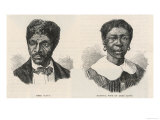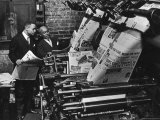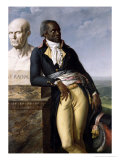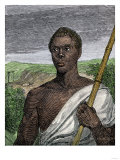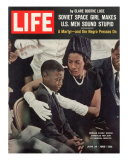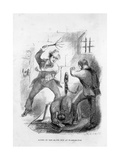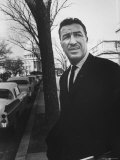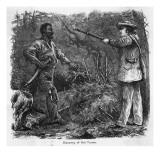|
|
Famous Men in Black History Educational Posters & Prints
for social studies classrooms, home schoolers to celebrate Black History Month in February.
|
social studies > history > Black History Index > FAMOUS BLACK MEN | List Notable Men
|
|
Selection of notable and famous men in Black and African American history posters include composite posters ‘Civil Rights Leaders’, ‘Black History’, musicians and entertainers, heros and heroines, artists, innovators, athletes and African inspired art.
|
|
|
The Man I AM
The path I walk
was made for me
with grains of faith
for sand ...
Because of those
who paved the way -
I am free to walk this land.
|
|
|
|
Harlem Renaissance Culture Guide Poster Map
One Hundred Years of History, Art, and Culture
Poster map guide shows the homes, nightclubs, and churches linked with Harlem’s writers, artists, musicians, thinkers, and political leaders of the 1920s.
The back of the poster map provides addresses and an easy walking guide.
• more Culture Map posters
• more maps
|
|
|
|
|
|
|
Robert Sengstacke Abbott
b. 11-24-1870; St. Simons Island, Georgia
d. 2-29-1940; Chicago, IL (Bright's Disease)
Lawyer Robert Sengstacke Abbott was the founder and publisher of the Chicago Defender newspaper, and an early African-American Baha'i.
The Defender came to be known as “America's Black Newspaper” and made Abbott one of the first self-made millionaires of African-American descent. He advocated for people to leave the South and come North for jobs and a better life.
Abbott hired Willard Motley to write a children's column called “Bud Says”, which is the namesake of Chicago's Bud Billikin Parade and Picnic.
Abbott's nine goals were:
1. American race prejudice must be destroyed.
2. The opening up of all trade-unions to blacks as well as whites.
3. Representation in the President's Cabinet.
4. Engineers, firemen, and conductors on all American railroads, and all jobs in government.
5. Representation in all departments of the police forces over the entire United States.
6. Government schools open to all American citizens in preference to foreigners.
7. Motormen and conductors on surface, elevated and motor bus lines throughout America.
8. Federal legislation to abolish lynching.
9. Full enfranchisement of all American citizens. |
|
|
|
|
Jean-Baptiste Belley
b. c. 1746; Gorée, Senegal
d. c. 1805; France
Jean-Baptiste Belley was sold into slavery as a toddler, became educated and was able to purchase his freedom as an adult in Saint-Domingue. In 1793, following the French Revolution, he spoke out against slavery as the only Black member of a three person coalition sent to France to represent the colony in the National Convention.
In 1802 Napolean orderd him arrested and returned to France for imprisonment.
|
|
|
|
Joseph Cinqué
née Sengbe Pieh
b. c. 1814; West Africa
d. c. 1879; Sierra Leone
Joseph Cinqué, a rice farmer, is best remembered as the leader of a group of hostages on the schooner Amistad, who revolted and gained control of the ship. Eventually the Amistad was detained by the US Navy and a series of court cases ending with a 1840 Supreme Court decision that the Africans mutinied to regain their freedom after being kidnapped and sold illegally. Former U.S. President John Quincy Adams, together with Roger Sherman Baldwin, were critical to the Africans' defense.
• Amistad, 1997, DVD
|
|
|
|
Medgar Evers
b. 7-2-1925; Decatur, MS
d. 6-12-1963; Jackson, MS
Medgar Evers, an African American civil rights activist was shot and killed June 12, 1963.
In 1994 Byron De La Beckwith was convicted of the murder; two previous trials with all white jurys ended in mistrials.
|
|
|
|
A. Leon Higginbotham, Jr.
b. 2-25-1928; Ewing, NJ
d. 12-14-1998; Boston
A. Leon Higgenbotham was a civil rights advocate, author, and the seventh African American Article III judge appointed in the United States, and the first African American judge on the United States District Court for the Eastern District of Pennsylvania.
|
|
|
|
Charles Hamilton Houston
b. 9-3-1895; Washington, DC
d. 4-22-1950
Lawyer, Dean of Howard University Law School and NAACP Litigation Director, Charles Hamilton Houston, played a significant role in dismantling the Jim Crow laws and trained future Supreme Court Justice Thurgood Marshall.
FYI - Elena Kegan, the former dean of the Harvard Law School and now Associate Justice of the Supreme Court, held the Charles Hamilton Houston Professor of Law Chair.
|
|
|
|
Percy Lavon Julian
b. 4-11-1899; Montgomery, AL
d. 4-19-1975; Illinois
Research chemist Percy Lavon Julian was a pioneer in the chemical synthesis of medicinal drugs from plants and during his lifetime he received more than 130 chemical patents.
He was one of the first African-Americans to earn a doctorate in chemistry (after St. Elmo Brady and Edward M. A. Chandler) and he also taught chemistry at the university level.
|
|
|
|
Solomon Northup
b. July-1808; Rhode Island
d. after 1857
Solomon Northup was the son of free blacks and landowners in New York State, and well educated for the time and place. He is remembered today because he was one of the few free black men to regain freedom after being kidnapped and sold into slavery.
In 1841 Northup was drugged, abducted and sold in Louisiana where he spent over a decade with various owners before being liberated in 1853. His recovery came about because of an itinerant Canadian carpenter, working in Louisana, was able to contact Northup's family and an 1840 NY law that required the release and return of African-American residents who had been kidnapped and sold into slavery.
After returning to his family Northup published his memoir, Twelve Years a Slave, and became active speaker in the abolition movement.
|
|
|
|
Garrett Morgan
b. 3-4-1877; Paris, Kentucky
d. 8-27-1963; Cleveland, OH
Garrett Morgan, a practical man with humble beginnings, devoted his life to creating things that made the lives of other people safer and more convenient.
His first significant invention, the Morgan Safety Hood, or “Breathing Device” as he called it, was originally worn mainly by firefighters, but made national news as the “gas mask” used to rescue several men trapped during an explosion in a tunnel beneath Lake Erie.
Morgan's second major invention came about after seeing a collision at an intersection. His stop-and-go signal with a stop for all directions - a precursor to our red, yellow, green light traffic signals, halted traffic in all directions.
|
|
|
|
Pinckney Benton Stewart Pinchback
b. 5-10-1837; Macon, GA
d. 12-21-1921; Washington, DC
Republican P.B.S. Pinchback was the first person of African-American descent to become governor of a U.S. state. He served as the 24th Governor of Louisiana for 35 days, from December 9, 1872, to January 13, 1873. He was elected to the U.S. House of Representatives, the U.S. Senate, and served on the Louisiana State Board of Education. Pinchback also recruited black soldiers for the Union in New Orleans during the Civil War.
Pinchback's parents were former slave Eliza Stewart of African, Cherokee, Welsh and German ancestry, and William Pinchback, Eliza's former master. Their five children were brought up in a relatively affluent home on a large plantation in Mississippi. When the father died in 1848 Eliza fled north with her children to prevent the Pinchback relatives from claiming them as slaves.
The author Jean Toomer was Pinchback's grandson.
|
|
|
|
Adam Clayton Powell Jr.
b. 11-29-1908; New Haven, CT
d. 4-4-1972; Miami, FL
Adam Clayton Powell, Jr. represented Harlem, New York, in the US House of Representatives 1945-1971. This photographic print from LIFE magazine archives first appeared 10-30-1964.
|
|
|
|
Joel Elias Spingarn
b. 5-17-1875; New York City, NY
d. 7-26-1939
Educator, literary critic, and civil rights activist Joel Elias Spingarn was one of the first Jewish leaders of the National Association for the Advancement of Colored People (NAACP), serving as chairman of its board from 1913 to 1919, its treasurer from 1919-30, its second president from 1930 until his death in 1939.
Spingarn is the namesake of the Spingarn Medal, established in 1914, and awarded annually by the NAACP for outstanding achievement by an African American. His will stipulated a bequest to fund the Spingarn Medal in perpetuity.
Arthur Spingarn, brother of Joel, was also active in NAACP.
|
|
|
|
Nat Turner
b. 10-2-1800; Southhampton Co., VA
d. 11-11-1831; Southampton Co.
Nat Turner led the largest slave rebellion in the American South prior to the Civil War. He was tried, convicted and executed.
Turner, who learned to read and write, was deeply religious. He was known as “The Prophet” among fellow slaves and often conducted Baptist services, influencing both black and white. His rebellion was based on a vision - “heard a loud noise in the heavens, and the Spirit instantly appeared to me and said the Serpent was loosened, and Christ had laid down the yoke he had borne for the sins of men, and that I should take it on and fight against the Serpent, for the time was fast approaching when the first should be last and the last should be first.”
• The Confessions of Nat Turner
Discussion Point: Compare the violence of the Crusades of the Middle Ages and the Jihads of today. See The Confessions of Nat Turner: Memoir of a Martyr of Testament of a Terrorist? in Theorizing Scriptures, a collection of essays.
|
|
|
|
Roy Wilkins
b. 8-30-1901; St. Louis, MO
d. 9-8-1981; NYC
Roy Wilkins, a civil rights activist from the 1930s to the 1970s is most remembered for his leadership of the National Association for the Advancement of Colored People (NAACP).
|
|
|
|
Andrew Young
b. 3-12-1932; New Orleans, LA
Politician, diplomat, activist and pastor Andrew Young served as Mayor of Atlanta, a Congressman from Georgia's 5th district, and United States Ambassador to the United Nations. He also served as President of the National Council of Churches USA, was a member of the Southern Christian Leadership Conference (SCLC) during the 1960s Civil Rights Movement, and was a supporter and friend of Dr. Martin Luther King, Jr.
• Andrew Young at Amazon
|
|
previous page | top
|
|
I have searched the web for visual, text, and manipulative curriculum support materials - teaching posters, art prints, maps, charts, calendars, books and educational toys featuring famous people, places and events - to help teachers optimize their valuable time and budget.
Browsing the subject areas at NetPosterWorks.com is a learning experience where educators can plan context rich environments while comparing prices, special discounts, framing options and shipping from educational resources.
Thank you for starting your search for inspirational, motivational, and educational posters and learning materials at NetPosterWorks.com. If you need help please contact us.
|
|
|









